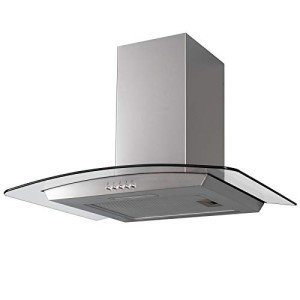
Cooker Hoods
Add a review FollowOverview
-
Founded Date March 23, 1927
-
Sectors Oil and Gas
-
Posted Jobs 0
-
Viewed 2
Company Description
Guide To Cookerhood: The Intermediate Guide The Steps To Cookerhood
Unveiling the Importance of Cooker Hoods: Enhancing Your Kitchen Environment
In modern kitchens, the cooker hood, typically referred to as the range hood, has ended up being more than simply an important appliance; it plays an essential role in keeping a healthy and comfy cooking space. This post explores the significance of cooker hoods, exploring their functions, types, and maintenance tips while including an in-depth comparison table for easy reference. We’ll likewise answer some regularly asked questions.
The Functionality of Cooker Hoods
Cooker hoods serve numerous purposes in the kitchen:
- Air Filtration: They help in eliminating smoke, steam, grease, and other airborne particles produced while cooking.
- Smell Control: Cooker hoods help in keeping the kitchen smelling fresh by filtering and expelling cooking smells.
- Security: By venting excess moisture and heat, they assist prevent the buildup of mold and reduce fire risks.
- Aesthetic Appeal: Modern cooker hoods can be found in numerous styles that can improve the total look of the kitchen.
Types of Cooker Hoods
Understanding the different kinds of cooker hoods can help house owners choose the right choice for their kitchen. Below is a comparative table summing up the main kinds of cooker hoods together with their key functions, pros, and cons.
| Kind Of Cooker Hood | Key Features | Pros | Cons |
|---|---|---|---|
| Under-Cabinet | Installed under cabinets, compact style | Space-saving, quickly accessible | Restricted extraction power |
| Wall-Mounted | Connected to the wall above the cooktop | Elegant style, excellent for open spaces | Requires wall installation |
| Island | Developed for use above kitchen islands | Uses a centerpiece, remarkable suction | Pricey, needs appropriate ceiling height |
| Downdraft | Pulls back into the countertop | Discreet, perfect for minimalist designs | Less effective than traditional hoods |
| Insert | Fits into custom-made cabinetry | Personalized, mixes perfectly | Can be complicated to install |
| Chimney | Freestanding with a chimney-like style | High extraction rates, excellent visual appeals | Takes up more area |
Advantages of Using a Cooker Hood
- Enhances Air Quality: By straining hazardous particles, cooker hoods substantially improve indoor air quality in the kitchen, which is necessary for health.
- Avoids Grease Buildup: An excellent cooker hood will efficiently catch grease particles, therefore lowering grime on kitchen surfaces.
- Improves Comfort: By removing heat and humidity, cooker hoods develop a more comfortable cooking environment, specifically throughout intense cooking sessions.
- Lowers Cleaning Time: With the efficient capture of grease and odors, kitchens with cooker hoods require less frequent deep cleaning.
Considerations When Choosing a Cooker Hood
When buying a cooker hood, numerous aspects need to be considered:
- Size: Ensure that the hood is at least as broad as the cooktop and has adequate height to allow for effective ventilation.
- CFM Rating: Consider the hood’s cubic feet per minute (CFM) rating, which suggests its air flow capability. Greater CFM is usually much better for larger cooking surface areas.
- Sound Level: Evaluate the sound level in decibels (dB). A quieter design can improve the cooking experience.
- Ducted vs. Ductless: Decide whether to set up a ducted hood (vented outside) or a ductless hood (usages charcoal filters). Ducted hoods are usually more reliable.
Upkeep Tips for Cooker Hoods
Regular maintenance increases the durability and effectiveness of cooker hoods. Here are a couple of essential pointers:
- Clean Grease Filters: Depending on use, tidy or replace filters every one to three months to make sure optimum efficiency.
- Check Ducts: Inspect and clean ductwork yearly to avoid blockages that can reduce airflow efficiency.
- Wipe Down the Exterior: Regularly tidy the hood’s exterior utilizing moderate soap and water to keep it looking brand-new.
- Evaluate the Fan: Conduct routine checks to guarantee the fan is operational, as a malfunctioning fan decreases the hood’s effectiveness.
Often Asked Questions (FAQ)
1. How do I identify the right CFM score for my kitchen?
The basic guideline is to determine the CFM requirement based upon your stove’s BTU rating. You can utilize the formula:[ text CFM = frac text BTU 100] Therefore, for a 30,000 BTU cooktop, you would need approximately 300 CFM.
2. Can I set up a cooker hood without existing ductwork?
Yes, ductless cooker hoods are offered, which recirculate air through filters before sending it back into the kitchen. However, they may not be as efficient in eliminating heat and moisture compared to ducted hoods.
3. How often should I clean my cooker hood?
It’s recommended to clean up the filters each to three months, depending upon use frequency and the type of cooking being done.
4. Are all cooker hoods noisy?
Not all cooker hoods create substantial noise. Search for designs with a lower dB ranking for quieter operation, particularly if sound is a concern in your kitchen.
5. What is the difference between a filter and a ductless cooker hood?
A filter hood uses charcoal or grease filters to clean the air and recirculate it back into the kitchen, while ducted hoods expel air outside through ducts, Cookerhood [www.carlifarese.Top] providing much better ventilation.
In conclusion, the cooker hood is an important component of modern kitchens, contributing to improved air quality, safety, and convenience. With various designs available, it is necessary to consider the particular requirements of your cooking area when selecting the ideal design. Routine maintenance will guarantee the cooker hood remains reliable and prolong its lifespan, making it a wise investment for any kitchen.

